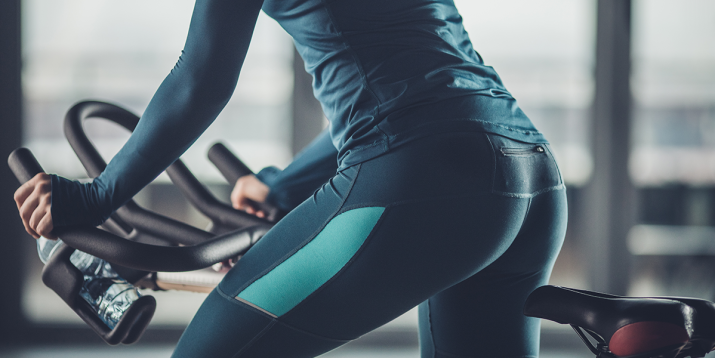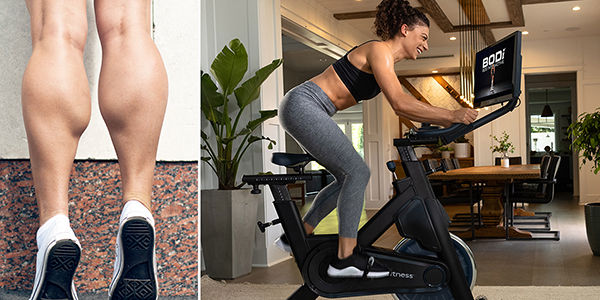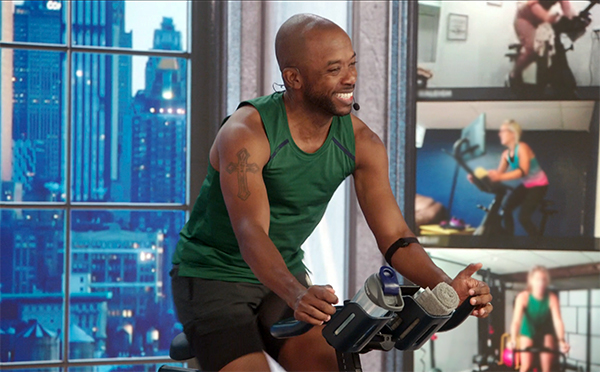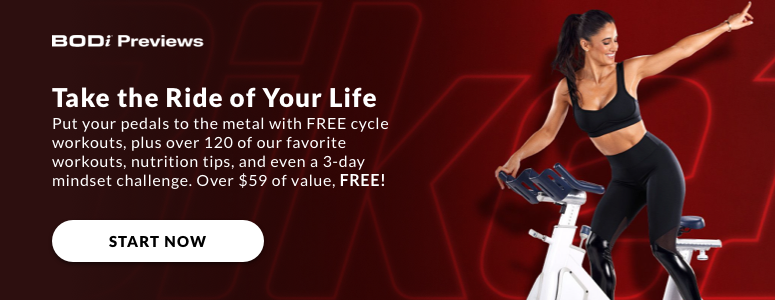How Indoor Cycling Can Help You Crush Your Glute Goals

If you’re looking to cycling to make your butt bigger — or you’re conversely worried that it will — you should know that building muscle isn’t easy. It’s a process that requires resistance training and proper nutrition in equal, ample measure.
So while cycling can make your butt bigger, you probably needn’t worry about having to replace all the chairs in your house. Even if you train and eat right, your genetics also affect how much muscle you can gain — and how quickly.
For these reasons and more, it’s crucial to also focus on yourself instead of others, especially when evaluating your progress.
How Does Cycling Change Your Butt Shape?
Your gluteal muscles are essential for powering your stride during indoor cycling rides, points out Melanie Melillo, CPT. Using them during these workouts “will shape and tone them and make them stronger,” she says.
This is especially true of the MYX II Bike since, as Melillo points out, “it has a 41-pound flywheel that creates resistance when you ride.” In that way, your indoor cycling session can act “like strength training for your legs,” she says.
And, if you already have glute muscle but want to make it more apparent by losing fat, cycling can help with that, too.
Can Cycling Help With Building Muscle?

Cycling can absolutely help you build muscle, says Melillo, but other parts of your lifestyle should also support that goal. That means indoor cycling can fit into your fitness routine whether you’re looking to build muscle mass or not.
“Resistance training alone can build a certain amount of muscle because our muscles adapt to the stress we place on them,” explains Melillo. “But you need hormones, like testosterone, and specific nutrition in combination with specific training to make muscles thicker and bulkier,” she adds.
Building muscle is calorically expensive to your body, so you’ll have difficulty adding any if you’re not eating enough. That also means that people who want to use indoor cycling to slim down rather than build muscle can do so by creating a caloric deficit.
You don’t need to be overly concerned about unintentionally building muscle, underscores Melillo.
“No one should be afraid of getting stronger,” she says, adding that “it takes a lot of incredibly hard work to make your muscles big.”
Tips to Get the Most Out of Your Cycling

For starters, you should check your form to make sure it’s correct. While “there is no special form that will use your glutes more when cycling,” according to Melillo, proper indoor cycling form “always matters for safety and injury prevention.”
Knowing your goals is key to getting the most from your indoor cycling. If you’re trying to build muscle, use our tips alongside your fitness routine. Make sure you’re also eating enough to fuel your activities and promote muscle growth.
Melillo suggests that you “follow the BODi trainer’s cues for heart rate and cadence” to get your best ride possible and also make use of the resistance on the bike.
But you’ll also be the most satisfied with your cycling if you’re realistic about your goals. Building muscle is hard, so it can take time and consistent effort. And, even if you’re putting in the work, Melillo underscores that some bodies have a much harder time putting on muscle. Measure you against you, and don’t forget about non-aesthetic victories on the bike.

